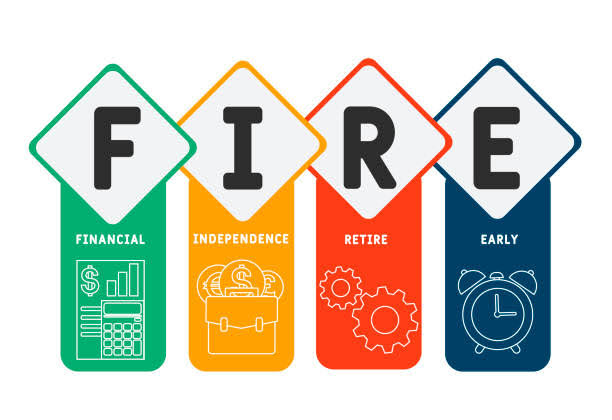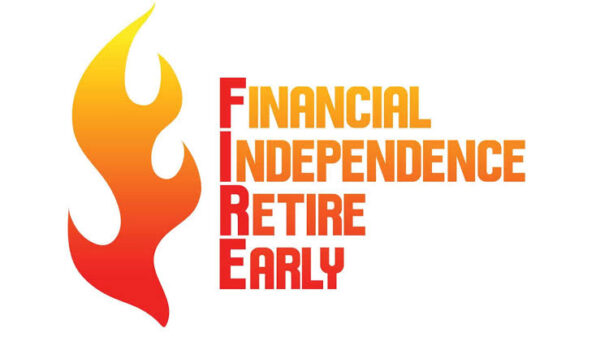40 Best FIRE (Financial Independence, Retire Early) Blogs

The FIRE (financial independence, retire early) movement is snowballing, gaining followers for about a decade, and now it is becoming more well-known generally. There are a lot of blogs and podcasts about the topic and what it takes to get to a place where you don't have to worry about money. This 40 Best FIRE Blogs article is here to guide you.
The primary goal of FIRE seems simple: save enough money, so you can quit your job early. But not every FIRE journey is the same, and there is now a whole online community where bloggers write about their paths to financial independence.
Paypant.com put together a list of the 40 Best FIRE (Financial Independence Retire Early) Blogs as there are many great blogs and resources.
What Is Financial Independence, Retire Early (FIRE)?
Financial Independence, Retire Early (FIRE) is a group of people who want to retire much earlier than traditional budgets, and retirement plans would allow.
They do this by saving a lot of money and investing it wisely. For example, the best-selling book Your Money or Your Life by Vicki Robin and Joe Dominguez came out in 1992. FIRE is based on one of the book's main ideas: people should judge every expense by how many hours of work it took to pay for it.
Understanding FIRE

The FIRE retirement movement directly aims at the traditional retirement age of 65, and the industry has grown up to help people plan for it.
Followers of the FIRE movement hope to be able to quit their jobs and live solely on small withdrawals from their portfolios decades before they turn 65. They do this by putting most of their income into savings.
Vox says millennials have become especially interested in a FIRE retirement in recent years. Extreme savers work for a long time and save up to 70% of their annual income.
When their savings reach about 30 times their annual costs, or about $1 million, they may quit their day jobs or stop working for good.
FIRE followers take out small amounts from their savings each year, usually between 3% and 4% of the balance, to cover their living costs after retiring.
Depending on how much they have saved and want to live, they may need to be very careful about spending and work hard to maintain and move their investments.
You should read them if you want to learn more about this movement or just get some good ideas for saving money and living a happier life.
Here, you'll find all the information you need about the fire movement and more than 40 blogs that can help you on your path to early retirement.
The Many Paths to FIRE
Within the FIRE movement, there are two subgroups: leanFIRE and fatFIRE.
LeanFIRE:
It means being able to retire early with less money saved for retirement and fewer living expenses, which will mean living cheaply during retirement.
This means you have to stick to a strict minimalist lifestyle and save a lot of money, which makes your life much more limited. Many people who follow LeanFIRE live on $25,000 or less per year. LeanFIRE focuses on cutting costs as much as possible.
FatFIRE:
It focuses on becoming financially independent without giving up the quality of life. It means being able to retire early because you have a lot of money saved up and other sources of income that pay for your living expenses.
FatFIRE is for the traditional worker who wants to save a lot more money than the average worker but doesn't want to lower their standard of living. Most of the time, you need a high salary and aggressive ways to save and invest money for it to work.
There's also semi-FIRE, the youngest child of FIRE. Whether you're interested in:
- Index funds
- Tax planning
- Getting out of Debt, or
- Starting a side business
There's probably a FIRE blogger for you.
A hybrid of these two is known as:
BaristaFIRE:
This "hybrid" refers to a lifestyle where you work part-time to make extra money, or you retire, but your partner keeps working. It is for people who don't want to do the above.
They quit their regular 9-to-5 jobs, but they live a life that isn't as simple as a minimalist. So instead, they do part-time Work and save money to do this. The first variation lets them get health insurance, and the second keeps them from using their retirement money.
FIRE is a Lifestyle
People see FIRE as a way of life, not just an investment strategy. Finding a partner with the same financial goals as you is a common problem for people who follow the FIRE lifestyle. The movement is growing among high-net-worth Millennials because online resources are easy to find.
With the rise of social media, workers' complaints about their jobs are getting more attention. Zachary A. Bachner, C.F.P. (r) of Summit Financial, said, "Social media has made people's lives look more glamorous and expensive, but it also lets them tell the world about their financial freedom."
The FIRE (Financial Independence and Early Retirement) Movement
The FIRE (Financial Independence, Retire Early) movement aims to be financially independent and retire early. In the 2010s, the model became very popular among millennials. Information shared in blogs, podcasts, and online discussion forums helped the model spread through online communities.
Those who want to reach FIRE do their best to save as much as possible by finding ways to make more money and spend less.
They also make aggressive investments that increase their wealth and income. The goal is to build enough assets so that their passive income is enough to cover living costs during retirement.
Many people who support the FIRE movement use the 4% rule as a rough guideline for how much to take out of their savings each year.
This ideology sets a goal of at least 25 times one's estimated annual living costs. When someone is financially independent, they don't have to work for money anymore. It means they can retire from traditional work decades before the average retirement age.
These FIRE Blogs Are Not One Size Fits All
You might not like Mr. Money Mustache's approach or disagree with what Jim Collins writes, but the important thing is to take what you want from each to make your plan for retiring early.
This movement is also just the beginning. Use it as a springboard to learn more about the many different people, styles, and ways of doing things in this world.
Related: Steps to take 10 Years Before Retirement
40 Best Fire Blogs
1. Millennial Money

Grant Sabatier, financially independent by age 30, started the personal finance blog Millennial Money. Grant sold Millennial Money to The Motley Fool in 2020, but he still works on the site.
Millennial money is one of the best FIRE blogs, and it talks about saving money, making more money, and retiring early. The archives have a lot of content, and new posts are added often.
2. Mr. Money Mustache

Pete Adeney is the "father figure" of the FIRE community. In 2005, before he turned 30, he gave up his job to start a family. Adeney began the Mr. Money Mustache blog in 2011. It's a song about how much he hates American consumerism and how people in the middle class can avoid living beyond their means.
This is probably the best FIRE blog for practical advice on retiring early with intelligent money management, passive income, and cheap living. He wants people to control their spending and live within their means.
You'll learn how to make simple changes like riding a bike to work instead of driving a car or giving up the air conditioning to save thousands of dollars a year. You'll also find many tips and advice about taxes and investing that has to do with money.
Adeney says. "I want the world to be happier and more suitable, but I think the way to get there is through our wallets. So that's why I put everything in that context.
Adeney says, "Once you know what enough means, buying yourself more doesn't make you happier." "And here in the United States, even a lower-middle-class income is more than enough to pay for a happy life, as long as you spend it right."
3. Early Retirement Extreme (ERE)

One of the oldest blogs about financial independence is Early Retirement Extreme, by Jacob Lund Fisker. As of early 2022, Jacob's net worth would let him keep living the way he does for 151 years, and his passive income is more than enough to cover his living costs. He's someone you can learn from.
Jacob thinks that early retirement is about much more than saving money. Instead, he believes it's about making a new way of living. He says he has saved enough money to keep living the way he does for, get this, the next 129 years!
Ern says that if you want to retire early, you should invest regularly using a "set it and forget it" strategy.
"Don't panic when the stock market goes down," he told her. "Keep putting money into the market, and don't try to time it. If you don't automate your savings, you'll always find a reason not to invest in the stock market.
Read also: How Much Money is Enough For Retirement?
4. Financial Samurai

Sam Dogen is another FIRE figure who has been around for a long time and owns financial samurai. However, after 13 years of working in finance, he quit and retired early in 2012.
On the other hand, Dogen's journey started on shaky ground because the Great Recession and bear market had just taken away 35% of his wealth. So he started his blog, Financial Samurai, as a "cathartic way to make sense of all the chaos and ease the pain."
Dogen moved to San Francisco, where the cost of living was high, but he was still able to rebuild his wealth. He describes how real estate, stocks and bonds, and private equity helped him become financially independent. Today, he also makes money from his online businesses. He says that, after taxes, his investments alone bring in $195,000 a year.
5. Brandon Ganch's Mad Fientist

In early 2012, Brandon Ganch, 33, started a blog about his efforts to reach FIRE. He has made a unique place for himself in the community with his blog, Mad Fientist, by focusing on numbers, optimization, and legal ways to avoid paying taxes.
With his complex numbers, podcast, and software to help people manage their money, he quickly became a go-to resource in the community.
Ganch is financially independent now, so he can do things he loves, like making music and traveling, all the time. He wants people outside the FIRE community to know that financial independence is possible for everyone, even if they don't make enough money to retire early.
"Even if you don't make much money, being smarter about how you spend what you have can help anyone," says Ganch. "Celebrate small victories as you go."
Ganch became financially independent in 2016 when he quit his software engineer job and moved with his wife to Scotland.
He first wanted to be financially independent to start his own business. Then, fear of risk and failure made him want to save enough money to make the ups and downs of building a business less painful. His goals look very different now.
Surprisingly, the Mad Fientist owner said, "When I became financially independent, I was surprised to find that money no longer drove me," Ganch says.
6. Chief Mom Officer by Liz Gendreau's

Gendreau started her blog, Chief Mom Officer because she noticed there weren't many working-mother voices in the FIRE community. She aimed to help women manage their money and family, do well in their careers, and become financially independent.
"When it comes to their own money, women face many different challenges than men do," Gendreau says. "When it comes to female breadwinners, in particular, there is a lot of wrong information out there.
You can easily find a lot of information about its problems, but there isn't much solid information or practical advice.
Gendreau often publishes interviews with women who make six figures or more so that she can connect directly with her readers. Her sources are women who work in many different fields, such as teaching, medicine, business, and finance.
7. Our Next Life

Tanja Hester runs the blog Our Next Life. She has also written, Work is optional; retire early. The Way That Doesn't Save Money "She leads the FIRE movement and is often called "the matriarch" of the movement.
A young woman in charge. She quit in 2017 when she was only 38 years old. Hester and her husband, Mark Bunge, run the blog Our Next Life. On it, they talk about how they became financially independent and what their idea of retirement is.
The couple says that they were able to save a lot for early retirement, which was sped up a lot by luck and high earnings. They bought a house in 2011 when prices were low because of the recession. It took them five years to pay off their mortgage.
Both of them didn't have a lot of student loans or credit card debt, which slowed down their savings. However, they could also invest in a rental property, which gave them a source of passive income when they were fully retired.
Hester may have been lucky, but how she defines FIRE has made her a well-known voice in the community.
She says that not everyone will be able to retire by age 40, but she also doesn't think that FIRE is an "all or nothing" game. Instead, she sees it as a way of life that can look different for each person.
8. Traveling Wallet
Neacato found a podcast where Mr. Money Mustache was a guest while she was looking for ways to pay off her student loans. When she heard his story, she was instantly interested.
Neacato made a plan to pay off her over $100,000 in Debt over five years. She made progress on her Debt on her own, and when she married in 2012, she with her husband worked on their Debt together. Neacato was finally out of Debt after three and a half years.
Related: How to live Debt free: 15 Money Hacks to get you out of financial problems.
Neacato, who is 32, and her husband have a net worth in the six figures and hope to be financially independent by age 40.
Neacato writes about how she paid off her Debt and started saving on her blog, the Traveling Wallet. She hopes her writing will help people who feel they're having trouble making ends meet.
She says, "Even if you feel like you're starting at a disadvantage, you still have a lot of power to make your life what you want it to be." "It will be harder, but it is still possible."
Related: 43 Places That Hire Nurses to Work From Home
9. Rich & Regular

The Saunders have been trying to get other African-Americans to join them in their pursuit of FIRE. On their blog, Rich®ULAR, they don't shy away from discussing the unique social and economic problems that people of color face.
Blog posts like "Dear Middle-Class Black America" and "The Racial Wealth Gap: How Did We Get Here? "Saunders talks about their readers' problems, even if they aren't always discussed.
Saunders talks about how people in their community who do well and have "intense ambitions and a drive to succeed" may face unique and tiring problems, such as helping parents and other family members who don't have enough money. They also try to help people who are going through it.
"In some cases, we are a piggy bank for those people, and a lot of those things are awful and put a lot of pressure on the people in our community who are doing well," says Julien. "For us, it's not just about going up; we're also helping other people go up with us."
10. One Frugal Girl

Since 2006, when the term FIRE movement didn't even exist, this FIRE blogger has been writing about her journey to financial independence. She says that her way of thinking about money came from growing up in a single-income family where her parents were careful with money.
Early in her career, One Frugal Girl worked as a programmer. She says that she did everything that was asked of her and learned how to talk to her bosses about her goals and earnings. By the time she quit her job
https://paypant.com/40-best-fire-financial-independence-and-early-retirement-blogs/
Comments
Post a Comment